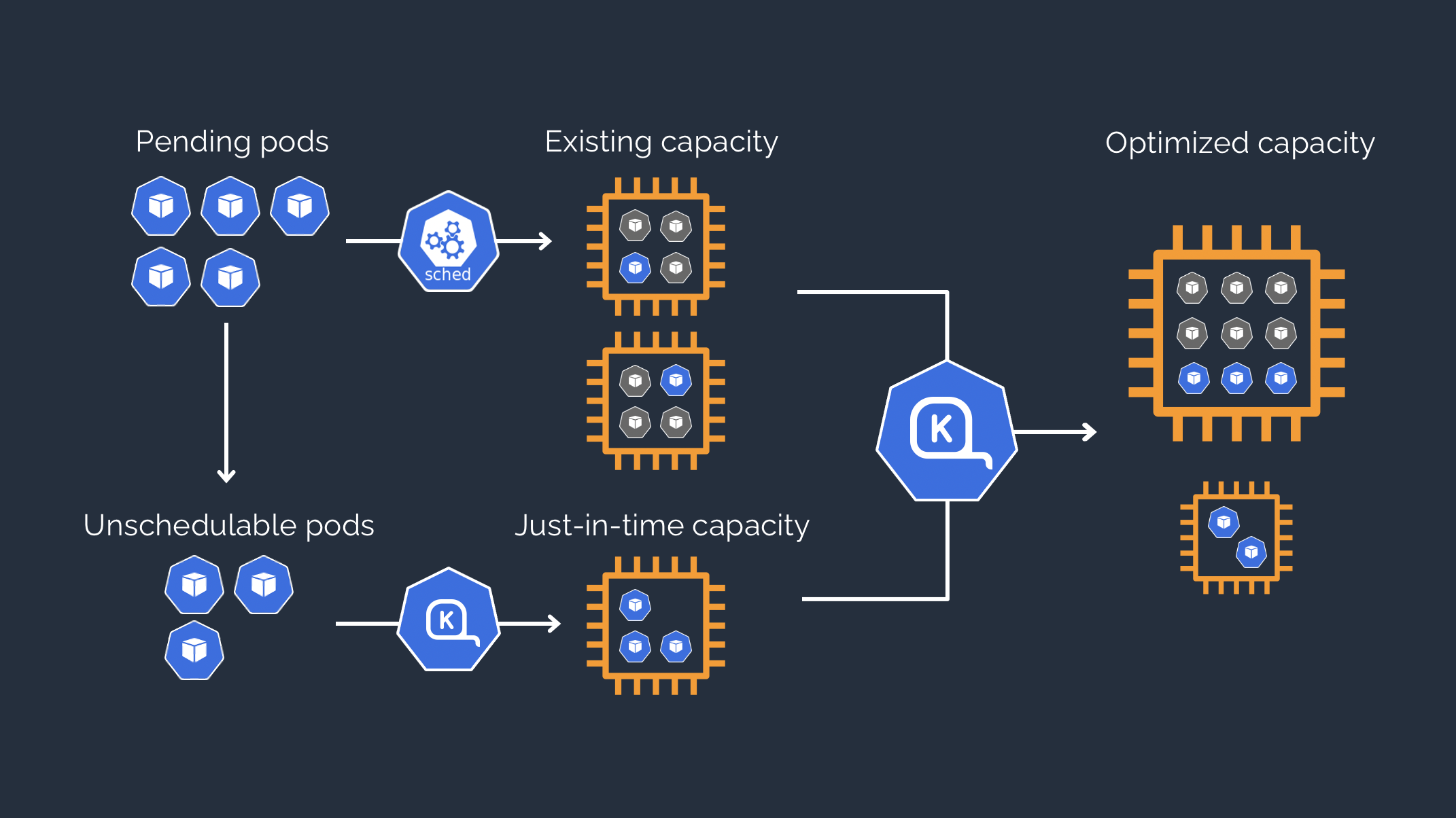In the previous post How to create an AWS EKS cluster with VPN access using Terraform, we had deployed cluster-autoscaler on our EKS to be able to automatically scale managed node groups.
Let’s now see how to deploy Karpenter on EKS via Terraform and then how to migrate from cluster-autoscaler to Karpenter.
We do this because Karpenter is a sort of evolution of cluster-autoscaler and has several advantages: not only is it faster and allows us to go beyond the constraints of managed node groups, but it allows us to better optimize costs and make development teams more autonomous.


